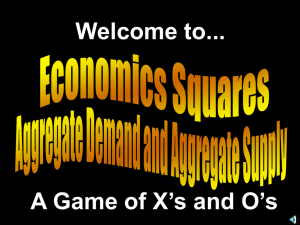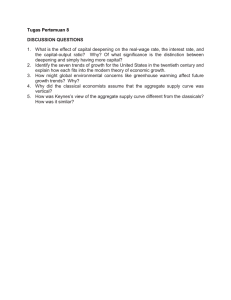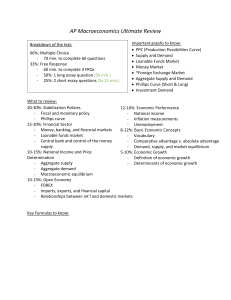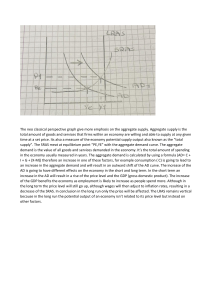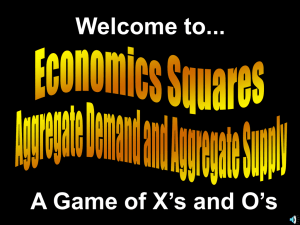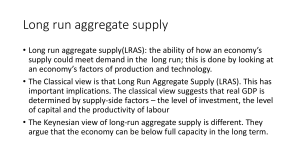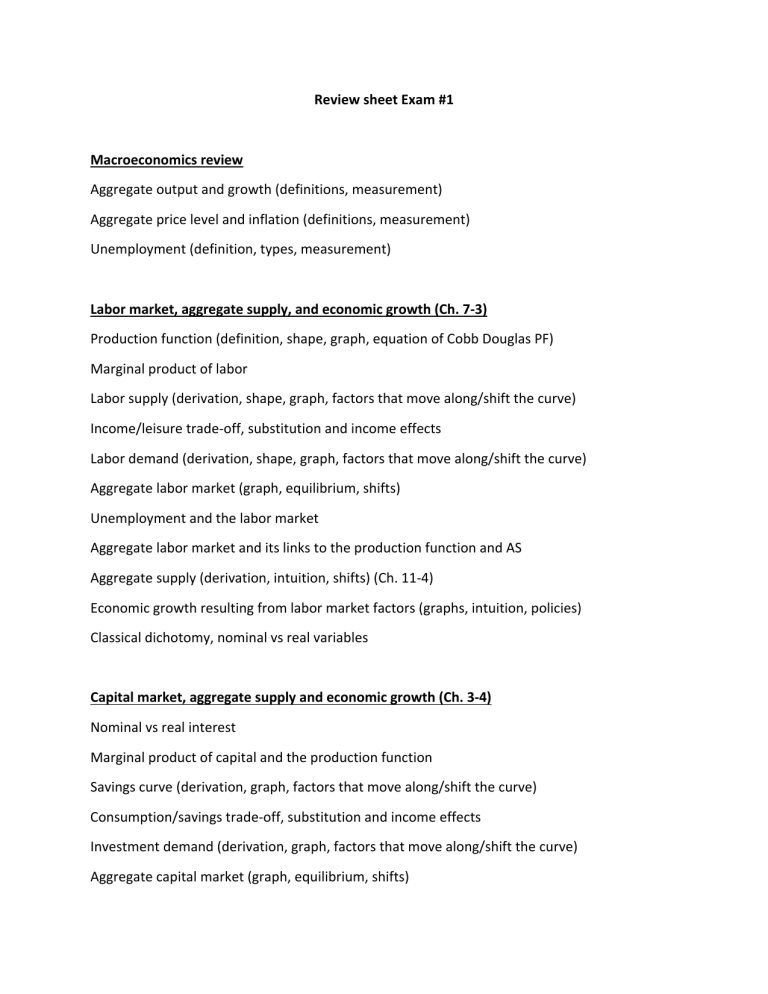
Review sheet Exam #1 Macroeconomics review Aggregate output and growth (definitions, measurement) Aggregate price level and inflation (definitions, measurement) Unemployment (definition, types, measurement) Labor market, aggregate supply, and economic growth (Ch. 7-3) Production function (definition, shape, graph, equation of Cobb Douglas PF) Marginal product of labor Labor supply (derivation, shape, graph, factors that move along/shift the curve) Income/leisure trade-off, substitution and income effects Labor demand (derivation, shape, graph, factors that move along/shift the curve) Aggregate labor market (graph, equilibrium, shifts) Unemployment and the labor market Aggregate labor market and its links to the production function and AS Aggregate supply (derivation, intuition, shifts) (Ch. 11-4) Economic growth resulting from labor market factors (graphs, intuition, policies) Classical dichotomy, nominal vs real variables Capital market, aggregate supply and economic growth (Ch. 3-4) Nominal vs real interest Marginal product of capital and the production function Savings curve (derivation, graph, factors that move along/shift the curve) Consumption/savings trade-off, substitution and income effects Investment demand (derivation, graph, factors that move along/shift the curve) Aggregate capital market (graph, equilibrium, shifts) Economic growth resulting from capital market factors (graphs, intuition, policies) Monetary and fiscal policy The role of government on the capital market (budget deficit and its impact, crowding out effect) (Ch. 3-4) Ricardian equivalence (Ch. 18-4; pp. 462-467) Quantity theory of money (role of money in the economy, velocity, effect of money on inflation) (Ch. 5-1) Monetary policy (discretionary vs rule-based, implications, recommendations) Money neutrality (Ch. 5-7) Aggregate demand (derivation, formula, shifts) (Ch. 11-3) Classical dichotomy (definition, examples) (Ch. 5-7)
